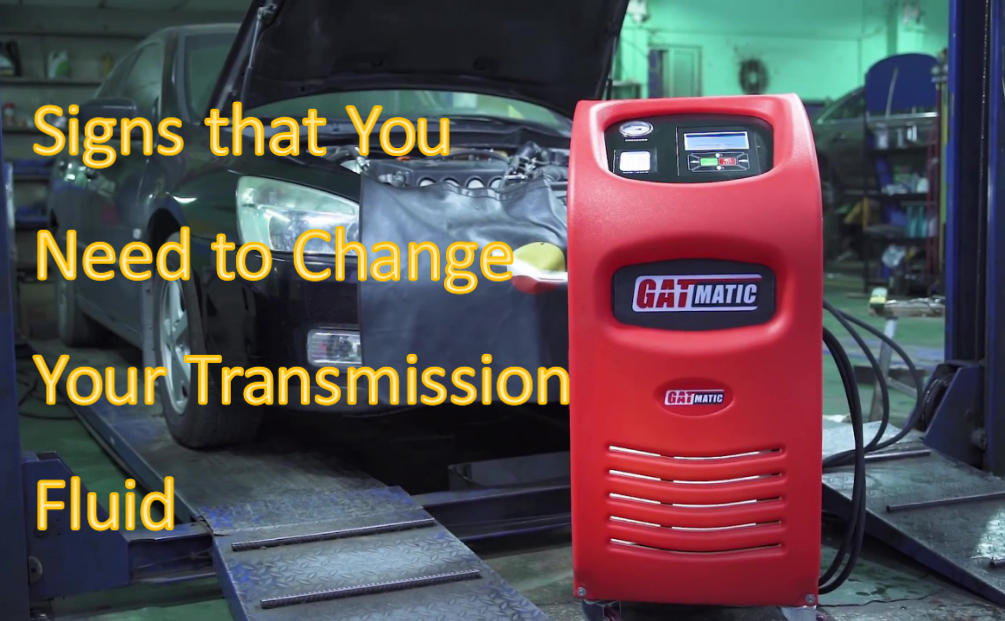Signs that You Need to Change Your Transmission Fluid
Understanding the importance of transmission fluid and knowing how to identify when it needs to be changed can help prevent costly repairs and extend the life of your vehicle. In this topic, we have discussed what transmission fluid does, signs that you need to change it, and some frequently asked questions about transmission fluid. By familiarizing yourself with these aspects of transmission fluid, you can become a more informed and responsible vehicle owner.
WHAT DOES TRANSMISSION FLUID DO?
Transmission fluid is a specialized lubricant that helps to keep the transmission of a vehicle operating smoothly. It serves a number of critical functions, such as reducing friction between the moving parts of the transmission, which helps to prevent wear and tear on the gears, bearings, and other components.
Not only the transmission fluid helps to dissipate the heat generated by the transmission as it operates, which can prevent overheating and damage to the transmission but also contains detergents that help to keep the transmission clean by removing debris and contaminants that can accumulate over time.
Moreover, the fluid helps to maintain the proper pressure inside the transmission, which helps to ensure that the gears and other components function properly.
Overall, transmission fluid should be checked and replaced at regular intervals, as specified by the manufacturer, to ensure that it continues to function properly.
SIGNS THAT YOU NEED TO CHANGE YOUR TRANSMISSION FLUID
Your car will give you signals if your transmission fluid is low, but you need to know what to look for. Here are ten signs that you should have your transmission fluid checked:
- Rough shifting: If you notice that your vehicle is shifting gears roughly or hesitantly, this could be a sign that your transmission fluid needs to be changed.
- Slipping transmission: If you feel like your transmission is slipping or not engaging properly, this could also be a sign that the transmission fluid is old or dirty and needs to be changed.
- Burning smell: If you notice a burning smell coming from your vehicle, this could indicate that the transmission fluid is overheating and breaking down. It is important to have this checked as soon as possible to avoid damage to the transmission.
- Leaking transmission fluid: If you see a puddle of reddish fluid under your vehicle, this could be a sign that the transmission fluid is leaking and needs to be replaced.
- Grinding noise: If you hear grinding noise when you shift gears, this could be a sign that the transmission fluid is low or needs to be changed.
- Delayed engagement: If there is a delay in your vehicle’s response when you shift from park to drive or reverse, this could indicate a problem with your transmission fluid.
- Transmission warning light: If your vehicle’s transmission warning light comes on, it could indicate a problem with the transmission fluid or a more serious issue with the transmission.
- Gear slippage: If your vehicle slips out of gear, this could be a sign that the transmission fluid is low or needs to be changed.
- Shuddering or vibrations: If you experience shuddering or vibrations when driving, this could be a sign of worn or dirty transmission fluid.
- Reduced fuel economy: If your vehicle’s fuel economy has decreased, this could be a sign that the transmission fluid is not functioning properly.
It is important to note that these signs can also indicate other problems with your vehicle’s transmission or engine. If you experience any of these signs, it is recommended to have your vehicle inspected by a qualified mechanic to diagnose the issue and recommend the appropriate repairs.
BEST ATF EXCHANGER FROM GATMATIC
Automatic transmission fluid (ATF) exchangers are important tools for maintaining the health of a vehicle’s transmission system. As a professional supplier of ATF exchangers, GATmatic can provide a wide range of high-quality ATF exchanging machines to suit the needs of different vehicles and businesses. Especially, our ATF exchanger features closed-loop systems to minimize air intake, adapters to fit various vehicle models, and multiple fluid exchange modes. We also provide technical support to ensure that our customers can operate and maintain the equipment effectively.
The GATmatic ATF Exchanger GT-516 features a 10-inch LCD touchscreen that provides a user-friendly interface for easy operation and also includes a built-in database and print function, making it easy to keep track of the work done on a particular vehicle.
One unique feature of GT-516 is its ability to self-check the flow direction automatically, which ensures that the machine is functioning correctly and reduces the risk of damage to the vehicle’s transmission. Additionally, the machine can exchange ATF automatically, which helps to minimize the time and effort required for the process.
Especially, GT-516 also features a self-flushing pipeline, which allows for the use of different types of ATF without the need for flushing between exchanges. This feature helps to save time and minimize the risk of contamination.
FAQs
- How often should I change my transmission fluid?
The recommended interval for changing transmission fluid varies depending on the make and model of your vehicle. It is typically recommended to change the transmission fluid every 30,000 to 60,000 miles, but it is best to check your owner’s manual or consult with a qualified mechanic to determine the specific interval for your vehicle.
- What type of transmission fluid should I use?
The type of transmission fluid recommended for your vehicle will vary depending on the make and model. It is important to use the type of fluid recommended by the manufacturer to ensure proper function and avoid damage to the transmission.
- Can I check my own transmission fluid?
In most vehicles, the transmission fluid can be checked by pulling out the transmission dipstick while the engine is running and the transmission is in the park. However, some newer vehicles may require a different method of checking the transmission fluid, so it is important to check the owner’s manual or consult with a qualified mechanic.
- Can I add transmission fluid myself?
Yes, transmission fluid can be added yourself by using a funnel and adding fluid through the transmission dipstick tube. However, it is important to use the correct type of fluid and not overfill the transmission, as this can cause damage to the transmission.
- What happens if I don’t change my transmission fluid?
If the transmission fluid is not changed regularly, it can become dirty and contaminated, which can lead to decreased performance and potential damage to the transmission. Over time, this can lead to costly repairs or even the need for a complete transmission replacement.
Final Thoughts
Transmission fluid is a crucial component in the proper functioning and longevity of a vehicle’s transmission. It is important to change the fluid at regular intervals, as recommended by the manufacturer, and use the correct type of fluid for your vehicle. Signs of low or dirty transmission fluid should be addressed promptly to prevent potential damage to the transmission. It is possible to check and add transmission fluid yourself, but it is recommended to consult with a qualified mechanic if you are unsure or experience any issues. By properly maintaining your transmission fluid, you can help ensure the smooth operation of your vehicle and prevent costly repairs down the line.
Describe Your Needs In Detail!
We will carefully evaluate your needs and give professional solutions.





